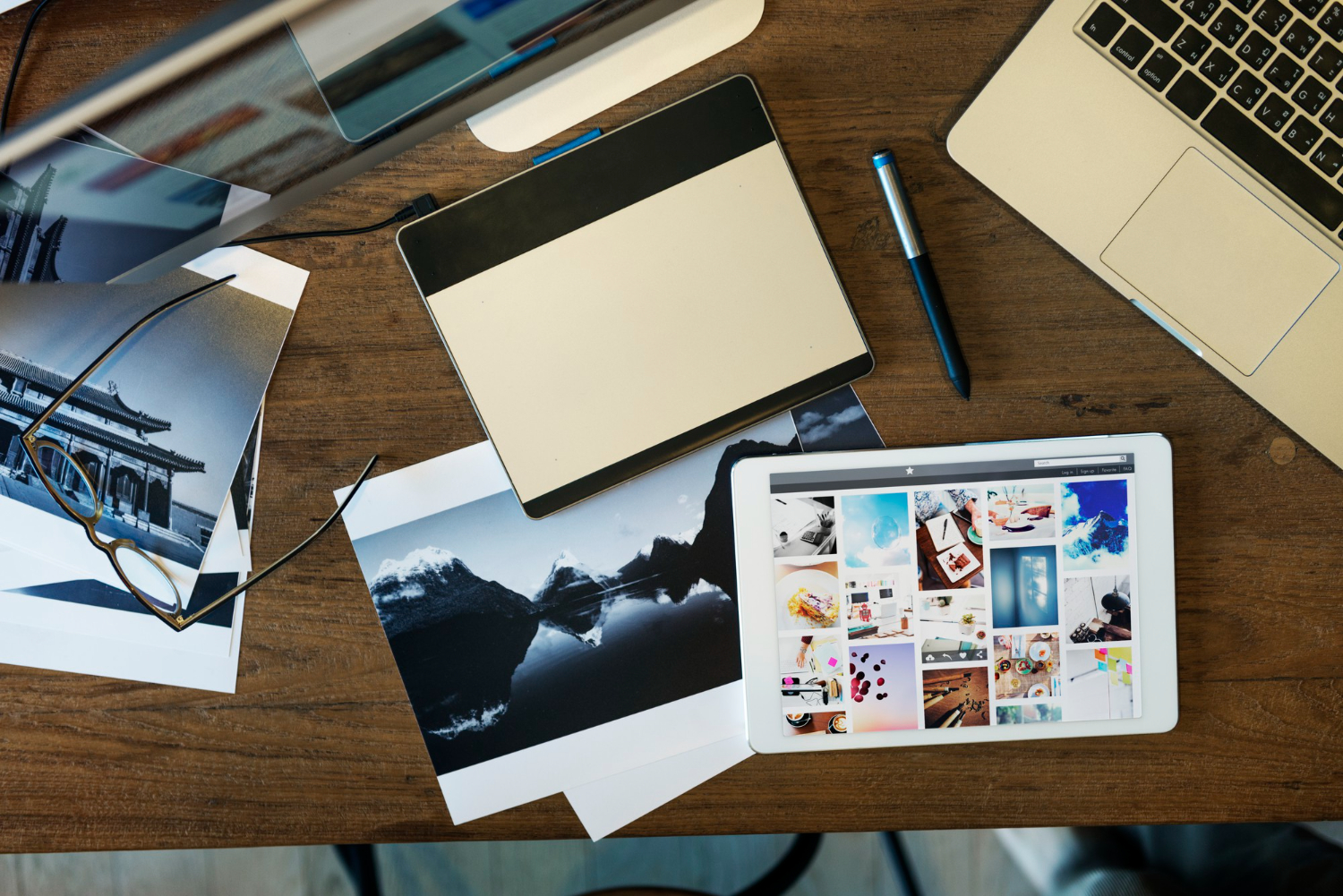A calm photo library is not the product of heroics; it’s the result of a few habits that make every image easier to discover later. When names, places, and people are attached to your pictures consistently, search stops feeling like a guessing game and starts feeling like memory. The trick is to build a simple spine that every phone, camera, and app can respect, then layer meaning where machines need your help. Dates line the shelves, event names label the boxes, places add geography you can skim at a glance, and people give you a dependable way to pull up a life in seconds. With that structure in place, sharing stops being a risky blast to a group chat and becomes a private link or album that stays tidy after the moment passes. You don’t need to start over or switch tools; you need a pattern you can repeat in five minutes a week.
Build the spine first: a chronology that survives every device

Great organization begins with time because every camera understands it. Make sure the capture date on your photos is accurate and visible to your software; this becomes the default sort that will keep your library coherent across phones, laptops, and cloud apps. If you shoot on multiple devices, confirm the clocks are roughly aligned so a birthday doesn’t fragment into separate clumps. Leave the master order as date-based and resist the urge to micromanage your whole library into custom folders; those structures often break when you change apps or export. Instead, treat the timeline as your unchanging archive and layer meaning with albums, keywords, and metadata that ride along. When you import scans or older photos, add a reasonable “taken on” date even if you only know the month or year; approximate is better than “unknown,” and your search tool will use it to place that image where your brain expects to find it. With a chronological spine, every other label you add becomes optional seasoning rather than a brittle crutch.
Fix dates and names at import so everything lines up later
The best time to clean data is the moment a photo enters your library. When you offload a card or sync from your phone, pause long enough to correct obvious problems a computer can’t guess. If a camera’s clock was wrong, batch-adjust the time shift before you forget. For scans or screenshots, write a real capture date into the metadata rather than leaving the import day as the only anchor; that one step will keep family histories and project documentation from dissolving into a blur. Give groups a clear event name while the moment is fresh—“2025-06-14 · Maya’s Graduation” tells you exactly what this set is without opening a single thumbnail. If your tool supports keywords, apply one or two at import, not ten; a simple “graduation” or “clientA” scales, while a cloud of near-synonyms becomes noise. Most importantly, let the file structure remain boring: keep originals in a date-based container that the app manages and rely on metadata and albums for meaning. Names you add now will become the words you search later.
Add places with intention so geography becomes a handle, not a headache
Location data turns a haystack into neighborhoods you can browse. Phones usually embed GPS automatically; dedicated cameras often don’t. When coordinates are missing but useful, pin a sensible place at the album or batch level rather than clicking a hundred points on a map. Think in layers: a city and venue are often enough to separate “Paris — Musée d’Orsay” from “Paris — Montmartre,” and they’ll be more enduring than a precise street corner you no longer remember. When you travel, add the region in the title or album name even if GPS exists; “Kyoto — Arashiyama” reads immediately in a search result list where a raw coordinate never will. If you care about privacy, understand how your sharing tool handles location. Turn off location sharing for public links by default and leave it on only when it adds value to the recipient—think meeting points and trailheads. Over time, a light touch with places makes questions like “show me the lake house summers” or “all work trips to Berlin” trivial to answer without elaborate tagging systems.
Teach your library who’s who so people become a reliable search key
Faces are the second-most useful axis after time. Modern libraries can cluster and label people automatically, but they need your help to become trustworthy. Start by naming your closest circle thoroughly and confirming a handful of suggestions for each person; those confirmations train the model faster than sporadic clicks across dozens of faces. Merge duplicate person entries as soon as you notice them, especially when someone changes hair, glasses, or age—these are the moments recognition splits. For babies and kids, be patient and add their names steadily as the software catches up to their changing features. Where you work with colleagues or clients, consider using a simple role tag in addition to a name so searches like “launch team photos” surface reliably even if a face model stumbles. Review your people view every month and fix the two or three oddities the system produced; a minute of curation buys you hours when you need to pull a complete set for a birthday, memorial, or portfolio update. Once “who” is stable, every other kind of search—events, places, year—stacks with it powerfully.
Give events and albums a grammar that reads like labels, not puzzles
Albums are for meaning you can read, not for replicating your entire timeline by hand. Use them to gather moments that live across days or devices and give them names that sort and scan well. A simple title pattern—date, category, and human name—makes lists readable in a rush: “2025-03 · Ski Trip — Verbier,” “2024-12-31 · New Year’s — Home,” “2025-05 · Client A — Launch Day.” Keep permanent albums sparse and functional: family highlights by year, each child’s milestone reel, a portfolio reel for work, a private album for documents and scans you need to retrieve quickly. For deep projects, add a short description in the album’s notes field with context or links to a doc; future you will bless the breadcrumb. Avoid nesting albums three levels deep; it rarely travels well between apps and makes sharing brittle. When you build a sequence you know you’ll reuse—say, a client proofing flow—clone the structure and rename it rather than reinventing it each time. The goal is for album titles to act like shelf labels you can skim while talking to someone, not a puzzle you have to solve alone.
Share privately and export clearly so organization survives the handoff
Sharing is where tidy libraries often fall apart. Choose private links or shared albums that don’t expose your entire library, and verify what metadata goes with them. If you don’t want recipients to see locations or device details, disable those fields for the link. When you collaborate, keep one canonical shared album per project and add or remove items there; this prevents duplicates and scattered edits across half a dozen chats. If you need to transfer originals, export with embedded metadata intact and adopt a filename pattern that carries meaning outside your app—something like YYYY-MM-DD_event_shortdesc_###.jpg tells a complete story in any file browser. For print or delivery, export at a sensible resolution and color profile once and save that preset; doing it the same way every time preserves consistency and spares you surprises at the printer. When you close a share, archive the link and, if your platform allows, keep a record note of what was shared and when; future questions—“did we send Aunt Rina the full set?”—become easy to answer without digging.
Keep a quiet weekly routine: a five-minute pass that prevents drift

Libraries stay useful when you give them a tiny rhythm. Once a week, open the latest month, correct a couple of misfiled faces, apply one missing place name to a batch, and merge any duplicate people that appeared. When an event deserves a label, add it right away; the right title in the moment is worth an hour of archaeology later. If you take a lot of screenshots, sweep them into a rolling “Screenshots — Q3” album or let your tool hide them by default so they don’t drown memories. For documents you photograph—receipts, serial numbers, whiteboards—move them into a “Scans & Docs” album and consider exporting the important ones as PDFs into a real filing system where search is precise and backups are independent. Finally, maintain backups that respect originals and metadata: keep the platform’s cloud sync on for convenience, but also maintain a periodic offline copy so that edits and tags you’ve added survive if you switch ecosystems. With a light weekly touch, the labels you rely on will stay accurate, searches will return exactly what you expect, and your library will feel calmer every month you use it.

